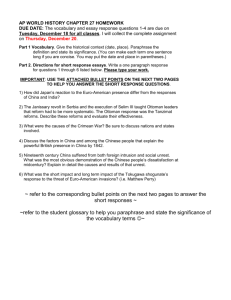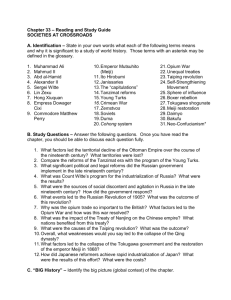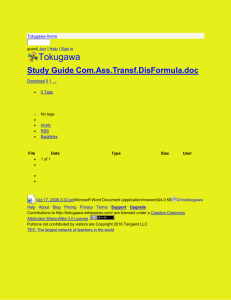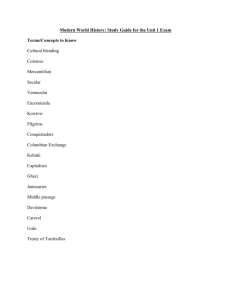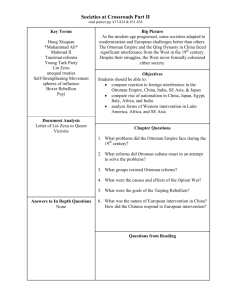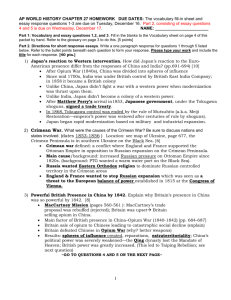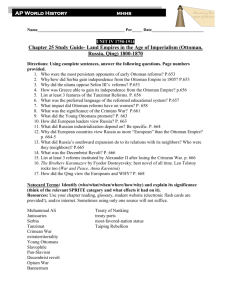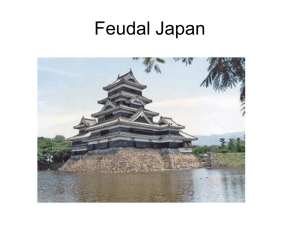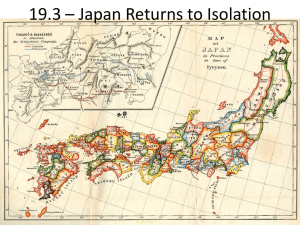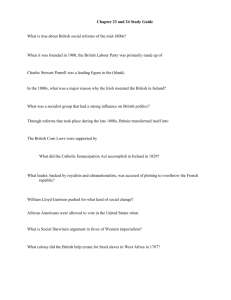AP CHAPTER 25 & 26 HOMEWORK
advertisement
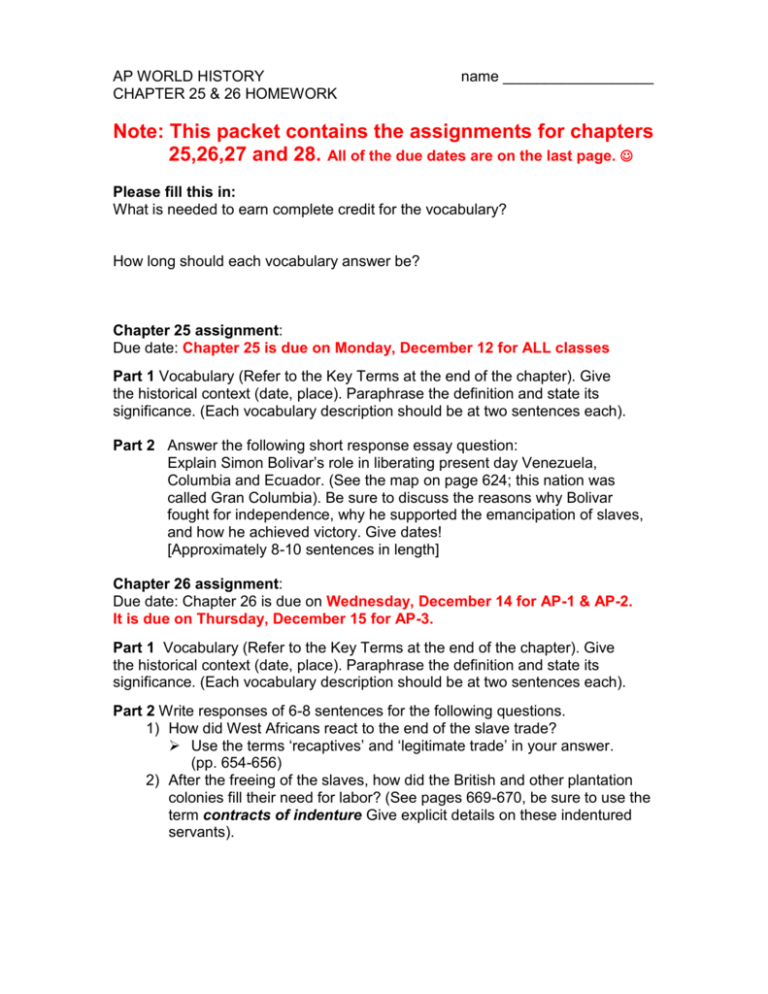
AP WORLD HISTORY CHAPTER 25 & 26 HOMEWORK name __________________ Note: This packet contains the assignments for chapters 25,26,27 and 28. All of the due dates are on the last page. Please fill this in: What is needed to earn complete credit for the vocabulary? How long should each vocabulary answer be? Chapter 25 assignment: Due date: Chapter 25 is due on Monday, December 12 for ALL classes Part 1 Vocabulary (Refer to the Key Terms at the end of the chapter). Give the historical context (date, place). Paraphrase the definition and state its significance. (Each vocabulary description should be at two sentences each). Part 2 Answer the following short response essay question: Explain Simon Bolivar’s role in liberating present day Venezuela, Columbia and Ecuador. (See the map on page 624; this nation was called Gran Columbia). Be sure to discuss the reasons why Bolivar fought for independence, why he supported the emancipation of slaves, and how he achieved victory. Give dates! [Approximately 8-10 sentences in length] Chapter 26 assignment: Due date: Chapter 26 is due on Wednesday, December 14 for AP-1 & AP-2. It is due on Thursday, December 15 for AP-3. Part 1 Vocabulary (Refer to the Key Terms at the end of the chapter). Give the historical context (date, place). Paraphrase the definition and state its significance. (Each vocabulary description should be at two sentences each). Part 2 Write responses of 6-8 sentences for the following questions. 1) How did West Africans react to the end of the slave trade? Use the terms ‘recaptives’ and ‘legitimate trade’ in your answer. (pp. 654-656) 2) After the freeing of the slaves, how did the British and other plantation colonies fill their need for labor? (See pages 669-670, be sure to use the term contracts of indenture Give explicit details on these indentured servants). AP WORLD HISTORY CHAPTER 27 HOMEWORK DUE DATE: The vocabulary and essay response questions 1-4 are due on Monday, December 19 for all classes. I will collect the complete assignment on Tuesday, December 20 for AP-1 & AP-2 and on Wednesday, December 21 for AP-3. Part 1 Vocabulary. Give the historical context (date, place). Paraphrase the definition and state its significance. (You can make each term one sentence long if you are concise. You may put the date and place in parentheses.) Part 2. Directions for short response essays. Write a one paragraph response for questions 1 through 6 listed below. Please type your work. IMPORTANT: USE THE ATTACHED BULLET POINTS ON THE NEXT TWO PAGES TO HELP YOU ANSWER THESE QUESTIONS. 1) How did Japan’s reaction to the Euro-American presence differ from the responses of China and India? 2) The Janissary revolt in Serbia and the execution of Selim III taught Ottoman leaders that reform had to be more systematic. The Ottoman response was the Tanzimat reforms. Describe these reforms and evaluate their effectiveness. 3) What were the causes of the Crimean War? Be sure to discuss nations and states involved. 4) Discuss the factors in China and among the Chinese people that explain the powerful British presence in China by 1842. 5) Nineteenth century China suffered from both foreign intrusion and social unrest. What was the most obvious demonstration of the Chinese people’s dissatisfaction at midcentury? Explain in detail the causes and results of that unrest. 6) What was the short impact and long term impact of the Tokugawa shogunate’s response to the threat of Euro-American invasions? (i.e. Matthew Perry) ~ refer to the corresponding bullet points on the next two pages ~ AP Chapter 27 bullet points (These are used to help organize your essays). Note: Assignments that explain all of the bullet points in a clear and somewhat detailed manner will be graded as a B. To get an A, your responses must be richly detailed. All responses must be accurate. PLEASE INCLUDE THE TITLE FOR EACH RESPONSE. The bullet points below correspond to the questions on the previous page. 1) Japan’s reaction to Euro-American presence contrasted with the reactions of China and India (pp.691-694) After Opium War, China was divided into spheres of influence Since mid 1700s, India was under British control by BEIC; in 1858 it became a British colony Unlike China, Japan didn’t fight a war with a western power when modernization was thrust upon them. Unlike India, Japan didn’t become a colony of a western power. After Matthew Perry’s arrival in1853, Japanese government, under the Tokugawa shoguns, signed a trade treaty. In 1868, Tokugawa control was ended by the rule of Mutsuhito (a.k.a. Meiji Restoration—emperor’s power was restored after centuries of rule by shoguns). Japan began rapid modernization based on military and industrial expansion. 2) Tanzimat Reforms (page 678) Define Tanzimat reforms Describe the Tanzimat Reforms (use the spaces below to take notes) ___________________________________________________ ___________________________________________________ ___________________________________________________ Evaluation: Ottoman Empire became a leader in social and political reforms in the Islamic world. These reforms greatly helped to modernize the Ottoman Empire. 3) Crimean War (dates 1853-1856 ) Location: see map of Ukraine, page 677, the Crimean Peninsula is in southern Ukraine on the Black Sea. Crimean war defined: a conflict where England and France supported the Ottoman Empire in opposition to Russian expansion on the Crimean Peninsula. Main cause/background: increased Russian pressure on Ottoman Empire since 1820s. (background: PTG wanted a warm water port on the Black Sea). Russia wanted Eastern Orthodox religion to dominate Russian controlled territory in the Crimean areas England & France wanted to stop Russian expansion which was seen as a threat to the European balance of power established in 1815 at the Congress of Vienna. (AP Chapter 27 bullet points continued) 4) Powerful British Presence in China by 1842 MacCartney Mission (pages 560-561 ): MacCartney’s trade proposal was rebuffed (rejected); Britain was upset Britain selling opium in China. Main factor of British presence in China–Opium War (1840-1842) [pp. 684-687] Britain sale of opium to Chinese leading to catastrophic social decline (explain) Britain defeated Chinese in Opium War (why? better weapons) Results: spheres of influence created, reparations, extraterritoriality; China’s political power was severely weakened—the Qing dynasty lost the Mandate of Heaven; British power was greatly increased. (This led to Taiping Rebellion; see next question). 5) Unrest in Nineteenth Century China Define the Taiping Rebellion (p.687) Explain causes of Taiping Rebellion Hong Xiuquan led the Rebellion; he had failed the civil service test & he probably went insane; he thought he was Jesus’ younger brother! About how many people died? 6) Short term impact (STI) and Long term impact (LTI) of Tokugawa’s response to Matthew Perry’s Arrival (pp. 691-694) Tokugawa Japan ruled by controlled decentralization After signing Treaty with Perry and the USA, many regional leaders sought to overthrow the Tokugawa By mid 1800s many regional leaders had become estranged (divorced) from Tokugawa favor and control. (Explain) In 1868, the Tokugawa era ended when Mutsuhito became emperor (his reign from 1868-1912) is known as the Meiji Restoration. During Meiji Restoration, Japan conducted the most rapid period of modernization in human history; its military and industrial base were transformed AP CHAPTER 28 HOMEWORK THE NEW POWER BALANCE 1850-1900 Due dates: Vocabulary and questions 1,2,3 are due on December 22 for AP-2; December 23 for AP-1 & 3. The rest of the assignment is due on Thursday, January 5, 2012 for all classes. Part 1 Vocabulary. Give the historical context (date, place). Paraphrase the definition and state its significance. Part 2. Write a one paragraph response for questions 1-5 using the bullet points below. You must also bring in at least one piece of outside information for each of these questions. Number 6 is simply a one sentence response. 1) Identify the new technologies that revolutionized everyday life in the late 1800s. Explain the effects these technologies had on society. (pages 701-704) Explain the impact of steel and the crucible Explain the impact of the light bulb and electricity; what was replaced? Telegraph cables Railroads 2) Why did the populations of European and American cities grow so fast between 1850 and 1914. Also explain how technology transformed urban life in those cities. (pp. 706-709) Irish migration why? Jewish migration why? Italian and Spanish migration why? (p.706) Explain what caused the drop in the death rate (p.706) Technology (p. 707) explain trains for commuting, explain pipes for clean water Modern apartment buildings (pp. 708-709) Poor air quality—“pea soup” fog explain 3) Describe the origins and aims of labor movements and socialist politics in the late nineteenth century. (pp.709-710) What were labor unions? Why were they formed? Define socialism; explain Karl Marx’s viewpoint on industrial capitalism What association did Marx form in 1864? Explain why. 4) Describe the lives of upper class, middle class, and working class women in English speaking countries between 1850 and 1914. (pp. 710-711) Describe the role and lifestyle of working class women (710) [3 sentences] Tell what the term Victorian Age referred to. (p. 711) Describe the roles and lifestyle of middle class women and how they were expected to adhere to Victorian values (pp. 711-712) Write one sentence about the role of women suffragists (p. 712) 5) Describe the role of nationalism in the creation of Germany, both before and after 1871. Include a summary of liberal and conservative nationalism in your answer. Up to the 1860s nationalism was based on liberalism (see term on p. 713); Contrast this with the subsequent conservative nationalism based on militarism (i.e. Bismarck) [p. 714 first paragraph] Prior to 1871 nationalism divided Germany—tell why or how (p. 714) Who was Bismarck? Whom did he defeat to unify Germany? (p. 714-715) After 1871, nationalism was strong in Germany, France, Italy, Austria, etc. Explain this idea in 1-2 sentences (p. 715) 6) The nationalist sentiments of various ethnic groups in Austria-Hungary and Russia weakened these nations. (p. 715) JUST PARAPHRASE THIS SENTENCE AND KNOW WHAT IT MEANS.
